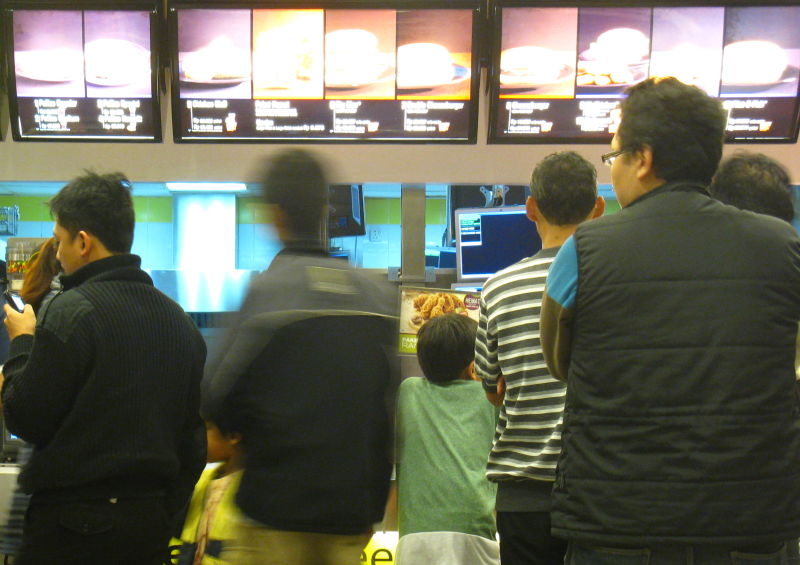“They’re cutting back on all the jobs, and a lot of people have been let go,” she says.
One reason is the local economy is bad. People aren’t eating out as much, and sales are down. So restaurants can’t afford a robust staff.
But there’s another reason that might explain why fast food employees aren’t getting more hours: Obamacare.
Starting January 1, businesses with 50 or more full time employees must offer health insurance to all full time staff or pay a hefty fine. Employers with 100 or more workers had to start offering coverage last year. But smaller businesses that operate on lower margins, especially restaurants, complained loudly about the cost. And some fast food franchise owners, figured out a way to avoid paying for coverage: just make everyone part time.
Nearly 60 percent of small franchise business owners said they would make personnel changes like this to avoid hitting the 50 employee threshhold, according to a 2013 U.S. Chamber of Commerce survey.
But, some of those restaurant owners who cut hours to sidestep the health law –- now regret it, says Kaya Bromley, an attorney who consults with employers on how to comply with the Affordable Care Act, and author of The Employers’ Guide to Obamacare.
“A lot of the fast food franchisees that did this are now coming back and saying, it was a great idea for reducing the number of people that I have to offer benefits, but now I can't run my restaurants,” she says.
They tell her it’s been a nightmare trying to manage a part time staff.
“Because you’ve got people who are less loyal, you’ve got people who are less skilled who don’t understand the business, and there’s more turnover,” she says.
So, Bromley has seen a lot of those restaurants reverse course.
“So they’re backtracking, saying, ‘It’s worth it to me to have a full of time staff of people in every restaurant and offer them benefits,’”she says. “Employers think that there’s a shortcut here or there, and then they realize, yeah, that shortcut really hurt me more than it helped me.”
The people hurt most by all the workforce management gymnastics are the people at the bottom of the restaurant pecking order who want to advance, but can’t, says Angelo Amador, vice president of labor and workforce policy for the National Restaurant Association.
“Someone who’s working part time, but wants more hours so they can move up the ladder, they can’t get the hours,” he says. “It ends up taking out that middle rung of employees.”
Obamacare has made restaurants less flexible, he says, mainly because it defines full time work as 30 hours a week or more. Amador says most other laws restaurants have to comply with, like overtime pay, define full time as 40 hours. He thinks the Affordable Care Act should be changed for consistency.
“It would be much easier if we could have one definition of full time,” he says.
Silvia Campos is relieved that she’s allowed to keep as many workers full time as she can at the Carl’s Junior she manages in Chowchilla.
“It’s a small town. For me, it’s hard to find a really good employee,” she says. “We have employees, and for some reason, they don’t like it and go. So it’s really hard to keep good people.”
But Campos says some workers don’t want more hours. They get subsidized health care through Covered California, the state’s health insurance marketplace, or free coverage through Medi-Cal. If their income gets too high, they lose eligibility for public benefits.
“We try but some people, they don’t want the full time,” she says. “They say no, keep me on part time and that’s good with me.”
The company does offer insurance, at a cost of about $300 a month, according to the workers. But some of them say they’re better off making less money and getting their coverage free from the state.
